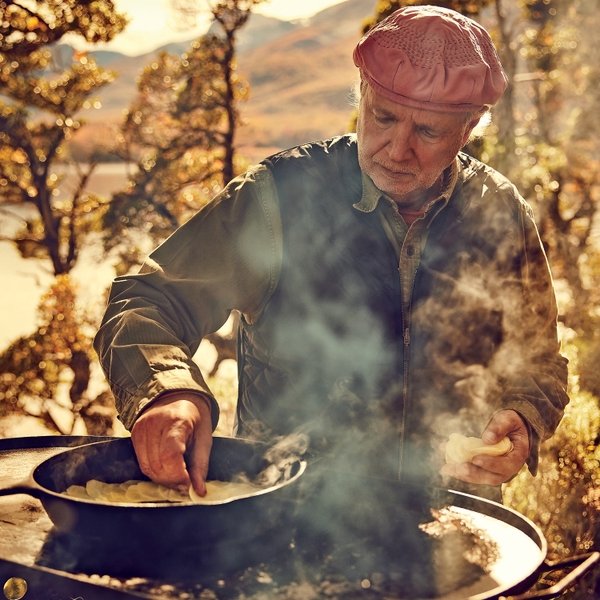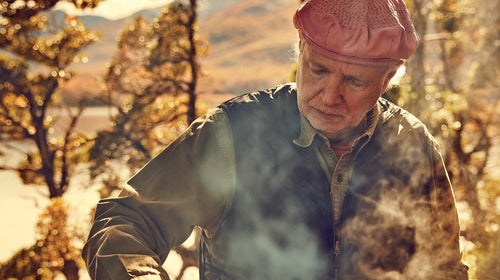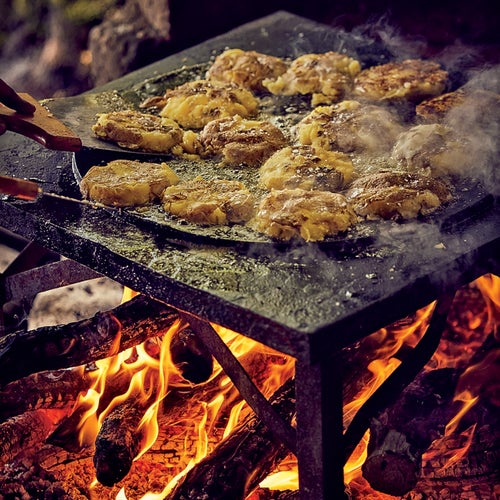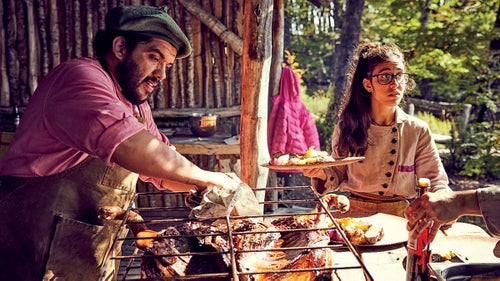Francis Mallmann Is the King of Outdoor Cooking. But He Still Has Work to Do.
The legendary chef runs restaurants on three continents and has perfected the art of cooking over an open flame. We joined him in Patagonia to ask: What’s next?
New perk: Easily find new routes and hidden gems, upcoming running events, and more near you. Your weekly Local Running Newsletter has everything you need to lace up! .
I am sitting with Francis Mallmann, the famed Argentine chef, on the deck of his house, perched on La Isla, a nearly 15-acre island within a remote lake in Patagonia. Before us are a strip steak and thinly sliced potatoes, both cooked in clarified butter and just removed from an iron parrilla, or grill, gently smoking nearby. I’ve offhandedly told him about a volume of essays and poems by Jorge Luis Borges, an even more fabled Argentine, that I’d recently bought at a bookshop in central Buenos Aires.
Mallmann, holding an almost comically bulbous glass of Chilean wine, brightens, and then asks: “Do you know the ‘Two English Poems’ by Borges? ” He reaches for his phone, searches for a moment, then begins reading. “What can I hold you with?” one poem opens, followed by a catalog of declarations, such as: “I offer you the loyalty of a man who has never been loyal.”
It’s the sort of moment I’ve come to regard as pura Mallmann, a heady, intoxicating foray into the empire of the senses. The scent of something sizzles away on a nearby plancha, or griddle; a soft tango plays in the background; people are gathered under a huge sky, with weather that seems to change on the half-hour; and the chef, with a broad, sympathetic face and flowing white hair, is declaiming some verse whose words, per Dylan, glow “like burning coal.”
Mallmann’s story has already reached near-legend status, but in case you haven’t heard it: A poetically inclined, libertine chef from Argentina is cooking French cuisine at some of the top restaurants in the world, winning awards, when, at age 40, he has a midlife crise de foie and turns instead to a sort of gastro-anthropological passion project to bring traditional Argentinean cooking—everything from the hot-rock-lined curanto pits of the Indigenous Mapuche, to the metal-grates-over-hot-coals campfire cooking of the gauchos—to the wider culinary scene. At the time it was a head-scratching move, but one that worked out for him, resulting in nine restaurants around the globe, adored cookbooks, television shows in Argentina, and big-name fanboys, including David Beckham, Tim Ferriss, and the late Anthony Bourdain. Perhaps his most famous endeavor is a noted appearance, during which he barbecues meat via a staggering variety of outdoor pits, bonfires, and grills, and poignantly waxes by turns adamant and wistful about his many romantic loves. In the end, Mallmann’s name has become virtually synonymous with one word: fire.





